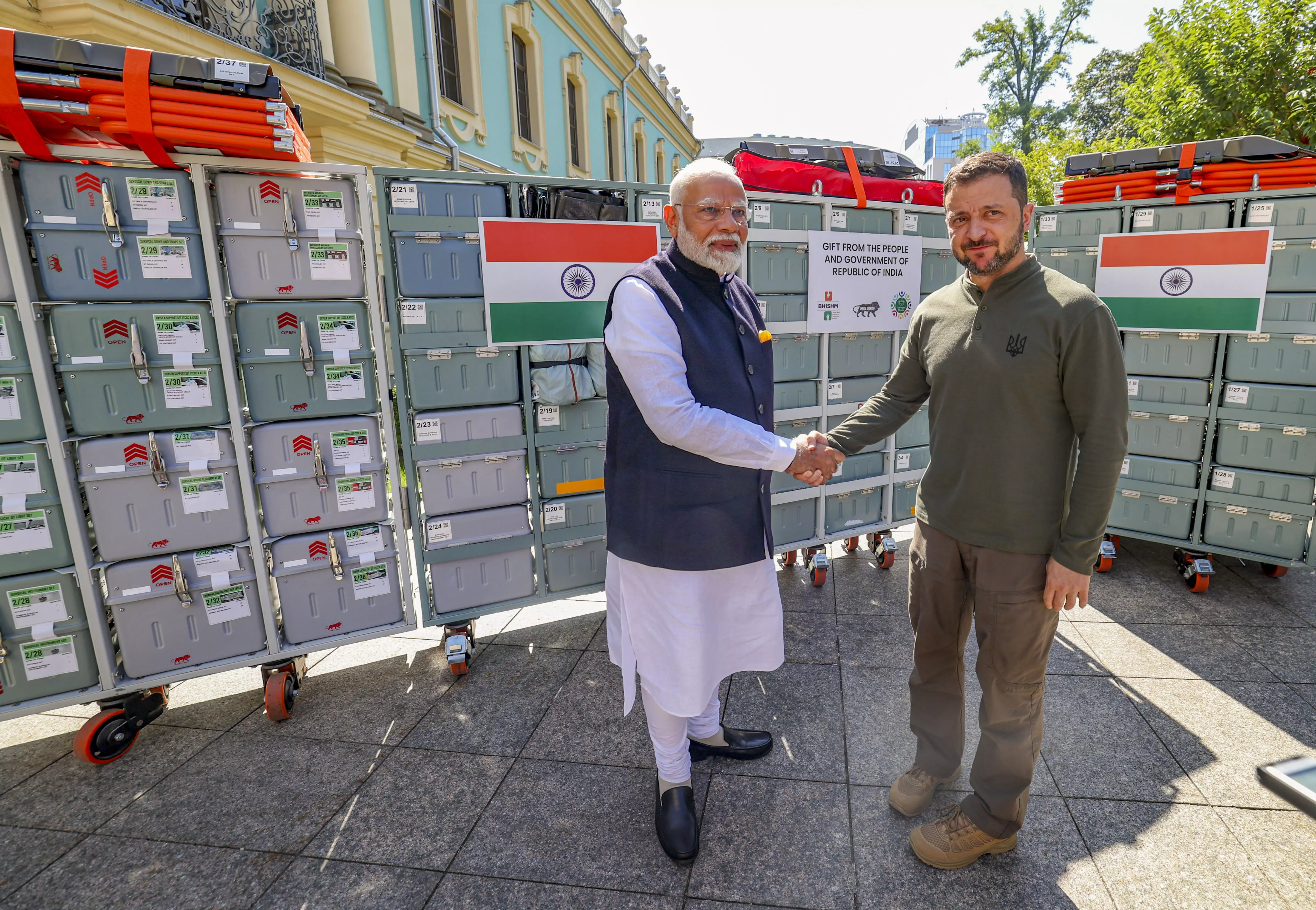
- Home
- India
- World
- Premium
- THE FEDERAL SPECIAL
- Analysis
- States
- Perspective
- Videos
- Sports
- Education
- Entertainment
- Elections
- Features
- Health
- Business
- Series
- In memoriam: Sheikh Mujibur Rahman
- Bishnoi's Men
- NEET TANGLE
- Economy Series
- Earth Day
- Kashmir’s Frozen Turbulence
- India@75
- The legend of Ramjanmabhoomi
- Liberalisation@30
- How to tame a dragon
- Celebrating biodiversity
- Farm Matters
- 50 days of solitude
- Bringing Migrants Home
- Budget 2020
- Jharkhand Votes
- The Federal Investigates
- The Federal Impact
- Vanishing Sand
- Gandhi @ 150
- Andhra Today
- Field report
- Operation Gulmarg
- Pandemic @1 Mn in India
- The Federal Year-End
- The Zero Year
- Science
- Brand studio
- Newsletter
- Elections 2024
- Events
- Home
- IndiaIndia
- World
- Analysis
- StatesStates
- PerspectivePerspective
- VideosVideos
- Sports
- Education
- Entertainment
- ElectionsElections
- Features
- Health
- BusinessBusiness
- Premium
- Loading...
Premium - Events

India, which was allowed to conduct its “non-aligned” foreign policy uncontested is now viewed as a hindrance, an obstacle to Ukraine’s aim of winning the war
On returning from his recent visit to Ukraine, Indian Prime Minister Narendra Modi did the most obvious thing – briefing United States President Joe Biden.
The briefing further provided grist to reports that Modi’s trip to Ukraine was to make up for his visit to Russia a month earlier, that had outraged Volodymyr Zelenskyy, the US and its European allies.
A day after the Biden call, Modi briefed Russian President Vladimir Putin about the Ukraine visit.
This reconfirmed India’s attempt to include Russia in the loop, as in the case of the US earlier.
For India, maintaining good relations with Russia and US-backed Ukraine simultaneously is a continuation of its decades old foreign policy of “non-alignment”. New Delhi needs Russia as much as it does the US. It cannot afford to antagonise either. Its dependence on the US, besides Russia, has rapidly increased, especially since the early 1990s when the Soviet Union disintegrated.
Prior to 1990, though India was among the leaders of the so-called non-aligned world, in reality it leaned heavily towards the Soviet Union even at the cost of antagonising the United States. At the time, during the Cold War, the world itself was largely governed by the balance that existed between the two superpowers.
India’s non-alignment
India’s non-alignment was rarely tested and it could afford to side with those nations that were closer to the Soviet bloc. For example, New Delhi had no relationship with Israel, was strongly pro-Palestinian, pro-Iran and stood up to the US-led West. All this in the firm knowledge that the Soviet Union was an unquestioned supporter of New Delhi. China was nowhere in the picture.
The situation today, since the last three decades, has changed dramatically. India has gravitated towards the US, has a strong relationship with Israel and is no longer an unconditional supporter of the Palestinian cause. Its policy towards Iran too is ambivalent, occasionally voting against Tehran in international forums such as the International Atomic Energy Agency (IAEA).
But India’s biggest drift was away from Russia, the rump province of the erstwhile Soviet Union. For a decade or so, until the turn of the century, there was no discernible pushback to India’s increasing closeness to Washington. Moscow was still recovering from the shock of losing the Soviet Union.
India’s foreign policy, on paper, continued to be one of non-alignment. But the formal Non-Aligned Movement (NAM) itself was comatose, if not dead. The world had moved to unipolarity, with the US emerging as the sole superpower.
In effect, New Delhi’s non-alignment now meant that it was closer to the US than to Russia but appearing to be equally friendly with both. India got a shock when Russia, which never had a relationship of any merit with Pakistan, warmed up to Islamabad in 2010, including it in a joint conference with a couple of Central Asian nations. Soon after, Putin even signed a military training agreement with Pakistan.
This set alarm bells ringing in New Delhi, which realised it cannot take Moscow for granted. The fast-growing relationship with the US was paused and India worked to regain Russia’s friendship in many different ways. Since then India has tried to maintain an even keel in its ties with the US without sacrificing its traditional friend, Russia.
Continuing foreign policy
The BJP government. which came to power in 2014. largely went along with the earlier Congress and Janata Dal-led dispensations in foreign policy formulations. It was fairly successful in maintaining friendly ties with the US and Russia, until February 2022 when Russian troops invaded Ukraine.
The Ukraine-Russia war, since February 24, 2022, has managed to shake India’s foreign policy in an unprecedented way. The US, which is backing Ukraine, is losing patience with New Delhi’s so-called non-aligned, or unaligned, foreign policy. India has, in fact, led a charmed existence. It is supping with Russian President Vladimir Putin and enjoying dessert with his rival Joe Biden.
Until recently Biden appeared to have given Prime Minister Modi a free pass. So had Putin. Unlike during the Soviet times, China is now a big power – probably the only nation in the world that can challenge and stand up to Washington. The US, recognising this, is depending on Indian support – logistical, mainly – to counter China.
India is, therefore, in the US-led Quad grouping (Japan and Australia the other two) that is meant to check China’s perceived belligerence in Asia.
As for Russia, it is now dependent on India to help run its economy. Facing international sanctions imposed by the US and its Western allies, Moscow is routing its oil through New Delhi. In the process it is earning valuable foreign exchange to sustain itself in the context of the prolonged conflict with Ukraine.
Russian crude and India
India, which before the Ukraine war, imported around two per cent of crude from Russia is now reportedly buying 40 per cent of its requirement, no less. Indian refiners then process it, use it for the domestic market, and export the rest to several European nations. Parts of the EU, which otherwise largely back Ukraine, have grown increasingly dependent on the Russia-processed oil from India.
The US, its allies and Russia, therefore, have their own reasons to let India be. For the last two and a half years, as the world has struggled to cope with the consequences of the Ukraine war, New Delhi’s policies were convenient for everyone.
Now, the situation is changing. The Zelenskyy government realises that Russia is under little, or no pressure. It is actually succeeding in its occupation of Ukraine. Zelenskyy naturally wants to turn the tables on Putin. In the last few months, Zelenskyy has increased pressure on the US, demanded its effective intervention and to increase its military supplies to check Russia.
Ukraine’s offensive in Russia’s Kursk region is a reflection of Zelenskyy’s success in persuading the West to do its bidding. India, which was allowed to conduct its “non-aligned” foreign policy uncontested, is now being viewed as a hindrance, an obstacle to Ukraine’s aim of winning the conflict.
India’s time for reckoning
India’s foreign policy is therefore under the US scanner. The issue facing the Biden administration is whether to force India to not buy Russian oil even at the expense of hurting Washington’s European allies, and of course, India’s internal market. If the war continues and Putin shows no sign of flagging, US pressure on India not to buy Russian oil is bound to increase.
In that case, New Delhi will be forced to assert itself. If it defies the US the repercussions can be varied and unexpected. Washington has the ability to make things difficult for India in its neighbourhood, especially along the restive border with Pakistan and in Kashmir. The removal of Sheikh Hasina in Bangladesh, India’s close ally, can even be seen as a warning for New Delhi, assuming the US was behind her ouster, going by allegations of a few politicians in India and Bangladesh.
Russia, already in the middle of a war and militarily stretched, does not have the ability to neutralise the US in India’s neighbourhood or come to New Delhi’s aid if required.
If India succumbs to US pressure and reduces, if not stop, buying oil from Russia, it can obviously cause difficulties for Moscow. But China, which now shares a close relationship with Russia, may step in and bail out Putin.
In effect, India finds itself neither indispensable for the US nor for Moscow.
For New Delhi to stand by non-alignment and assert its right to choose its foreign policy it will have to be prepared to face consequences either from Moscow or Washington. If Modi’s recent compensatory visit to Ukraine is any indication, New Delhi is likely to tilt towards Washington even at the cost of angering Putin, and the consequences that it may entail.
While the US can ensure crude oil flow to India from its allies in the Middle East, politically Washington may find it difficult to prevent Moscow from firing at New Delhi using China’s shoulders.
The conclusion is inescapable. If the Ukraine war continues, India’s time for reckoning is bound to arrive, sooner than later.

